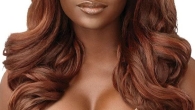
Understanding British Legal Wigs: Tradition or Necessity?
The Historical Origins of Wigs in the British Legal System
Why do british lawyers wear wigs? The presence of wigs in the British legal system dates back several centuries. Initially, wigs were not a symbol of legal authority but a popular trend among the well-to-do during the 17th century. It was a time when personal appearance played a pivotal role in signifying one’s social status and power.
The Influence of Fashion on Judicial Attire
In the 1600s, wigs became highly fashionable in European high society. This trend also found its way into British courtrooms. Judges and lawyers began donning wigs as part of their court attire, signaling their elite status. Over time, the wig transitioned from a fashionable accessory to an essential part of a barrister’s and judge’s uniform.
Transition from Personal Choice to Codified Requirement
Eventually, wigs went from being a personal fashion choice to a formalized component of judicial dress code. By the end of the 17th century, wearing a wig became a requirement for legal practitioners in court. Despite changing fashions and varying opinions on their practicality, the tradition of wearing wigs has endured for hundreds of years. Wigs now symbolize respect for the legal profession and its long-standing traditions, even as the discussion on their relevance continues.

Symbolism of Wigs in Legal Professions
Why do british lawyers wear wigs? Wigs within the British legal system have symbolized authority since the 17th century. Initially stemming from fashion, these judicial headdresses became emblems of a lawyer’s identity and status. As wigs indicated social rank outside the courtroom, they naturally imparted a sense of gravity and standing within it. Over time, this headgear has become ingrained as a hallmark of the profession.
Wigs as a Mark of Authority and Anonymity
The use of wigs by lawyers and judges conveys a powerful image of neutrality and history. The wig is a barrier between the personal and the professional, allowing barristers to embody the role of an impartial advocate. Its role is not just sartorial but also symbolic, offering anonymity to those within the legal process. This means that the focus remains on the case and the law, not on individual appearances.
The Role of Wigs in Courtroom Formality and Tradition
In court, wigs serve to preserve a legacy of decorum and seriousness. Their usage supports a formal atmosphere, respectful of the processes of justice. Despite constant evolution in society and fashion, the wig remains a steadfast tradition that emphasizes continuity and respect for legal heritage. This adherence to tradition reassures some of the steadfastness of legal processes.
The Modern-Day Use of Legal Wigs
In contemporary courtrooms, legal wigs persist, blending tradition with modern adaptations. While the fundamental design remains true to its roots, adjustments meet today’s practical needs. For instance, the once prevalently worn full-bottomed wigs, cascading past the shoulders, are now reserved for ceremonial occasions. The commonly seen bob-style wigs, with shorter sides and a distinct tail, are simpler and better suited to daily wear by barristers.
Changes and Adaptations in Wig Design
Modern wig design has evolved. The heavy, full-bottomed wigs gave way to more practical variants, tailored to be less cumbersome for day-to-day use in legal proceedings. Bob-style wigs are shorter and lighter, creating greater comfort for those who wear them hours on end.
Vegan-Friendly Alternatives: The Emergence of Hemp Wigs
With rising ethical and environmental awareness, new wig materials are emerging. Samuel March, an innovator and barrister, sparked a trend with his plant-based legal wig. Made from hemp, this vegan-friendly option reflects a commitment to sustainability within the legal profession. Companies like Hemp & Hemp now cater to those seeking eco-conscious alternatives, offering custom-made wigs that support a greater cause.

Cultural Perceptions and Controversies
Public Opinion on Maintaining the Wig Tradition
Why do british lawyers wear wigs? The tradition of wearing wigs in the British legal system piques public curiosity and debate. Surveys reveal mixed feelings from the public, some viewing wigs as an outdated custom. Others feel it’s a nod to the esteem of law. This split in opinion reflects the tension between historical appreciation and contemporary perspectives. Wigs symbolize a tangible link to the legal past, yet, for some, they contrast with modern sensibilities. The public’s voice is a crucial factor in the ongoing conversation about legal attire and its evolution.
Debates on Practicality and Modern Relevance
The relevancy of legal wigs in today’s society is hotly debated. Critics argue that the practice is impractical, citing concerns over comfort and cost. They suggest that the wig is a mere relic that adds little to the legal process. Others defend the tradition, highlighting its role in maintaining formality and continuity. They argue that wigs enforce impartiality and anonymity in the courtroom. The debate extends to the legal community, with lawyers and judges themselves divided. This discourse shapes the future of legal wigs, hinting at potential reforms and adaptations.
The Cost and Craftsmanship of Legal Wigs
The iconic British legal wig is not only steeped in tradition but is also a product of meticulous craftsmanship. The art of making these wigs requires precision and a deep understanding of historical styles. They are typically handcrafted from horsehair, a material known for its durability and the ability to hold shape. Craftsmen take great care in sewing and styling the wigs, ensuring each piece meets the high standards expected in the courtroom.
The Materials and Construction of Traditional Wigs
Traditional legal wigs are made from 100 percent horsehair. Though synthetic options exist, horsehair remains the preferred choice for its quality. Each wig involves hours of labor, with strands hand-knotted to create the iconic curls and tailored fit. The color, usually white or gray, adds to the solemnity of legal procedures.
The Financial Burden of Wig Ownership
The cost of a legal wig can be substantial, reflecting the workmanship that goes into each piece. Judges’ full-bottom wigs may surpass $3,000, while barristers’ simpler bob-style wigs can still command prices over $600. This financial commitment underscores the value placed on maintaining traditions within the legal profession.
The Future of Wigs in the Legal Realm
Why do british lawyers wear wigs? The question of whether wigs should remain a fixture in British courts is ongoing. Recent adjustments to legal dress codes reflect a system in flux, considering both tradition and modernity. As public discourse and legal opinions evolve, the future of legal attire, including the iconic wigs, hangs in the balance.

Recent Adaptations in Legal Dress Code
In recent years, legal dress codes have seen significant changes. Since 2007, barristers in family and civil courts no longer need to wear wigs. This move marked a shift towards modernizing courtroom attire. Advocates for change argue that this adaptation improves accessibility and relatability in the legal system. However, criminal courts continue to uphold the wig-wearing tradition, maintaining a link to legal history.
Potential Directions for Legal Attire Reform
Reform of legal attire may take various paths. One possibility is the complete discontinuation of wigs, in favor of a modern, uniform approach. Another is the preservation of wigs for ceremonial occasions only, balancing respect for tradition with contemporary preferences. Additionally, there’s room for innovative materials, like the hemp wigs introduced by Samuel March, which cater to ethical and environmental concerns. The legal attire could evolve to reflect societal values while still honoring its storied past. Discussions on practicality, cost, and symbolism will steer the course of these reforms.












Leave a Reply